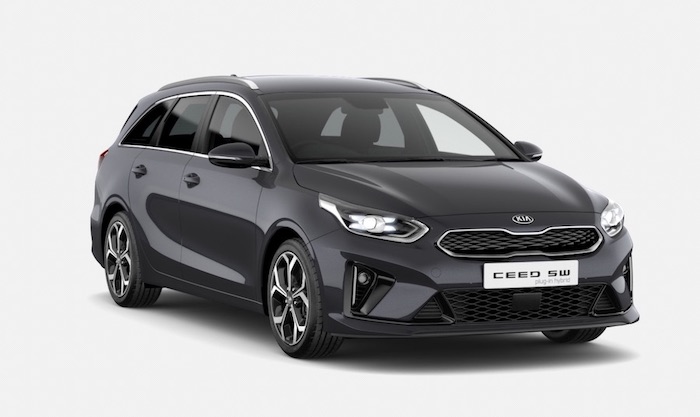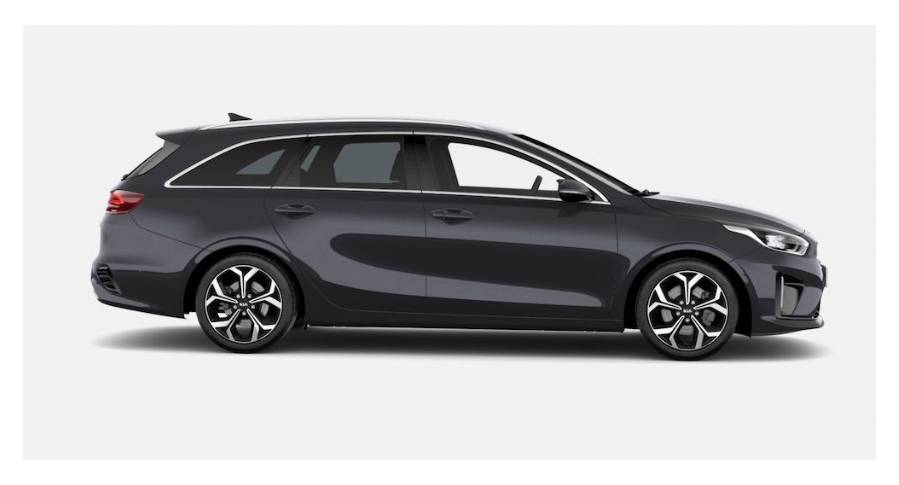Overview
Kia Corporation, the South Korean automotive manufacturer is fast developing a portfolio of lower-emission ‘eco’ vehicles, to include, zero-tailpipe emission battery-electric vehicles (BEVs), plug-in hybrid electric vehicles (PHEVs) and mild hybrids. The Korean automotive company is headquartered in Seoul, and it is South Korea’s second largest automotive manufacturer after the Hyundai Motor Company (Hyundai owns a 33.88% stake in Kia Corporation). At one point, the US automotive manufacturer, Ford Motor Company, also owned a stake in Kia.
Kia was found in June 1944, and was formerly known as Kyungsung Precision Industry. It has also been previously known as Kia Motors Corporation. The Kia name has been derived from the Sino-Korean characters, ‘ki’ (arise) & ‘a’ (Asia) to suggest ‘Rising from Asia’. The Kia Corporation has been active in the European markets since 1991. The Kia electric vehicle (EV) portfolio includes both, battery-electric vehicle (BEV) and plug-in hybrid electric vehicle (PHEV) models:
- The all-electric Kia Niro EV
- The all-electric Kia Soul EV
- The all-electric Kia EV6
- The all-electric Kia EV6 GT
- The all-electric Kia EV9
- The all-electric Kia EV3
- Kia Niro Plug-In Hybrid
- Kia XCeed Plug-In Hybrid
- Kia Ceed Sportswagon Plug-In Hybrid
- Kia Sportage Plug-In Hybrid
- Kia Sorento Plug-In Hybrid
Electric Cars: The Basics
For those of you new to zero-emission electric driving, we recommend a read of the following articles:
Sign up to the e-zoomed Electric Living newsletter
The Kia Ceed Sportswagon PHEV Estate
The Kia estate (Sportswagon) is available as both, a convention internal combustion engine (ICE) and as a plug-in hybrid electric vehicle (PHEV). The model is currently in its third generation. The hybrid variant concept was unveiled at the 2008 Paris Auto Show.
Though automotive manufacturers like Kia, have been busy upgrading their model portfolios, to include plug-in hybrid electric vehicles (PHEVs), in general, the number of available estate plug-in electric cars, still remains limited. Therefore, the Kia plug-in electric estate car is certainly worth the consideration for families and companies seeking a spacious, environmentally-friendly vehicle with a more affordable price tag.
The Kia PHEV pairs a 1.6-litre GDi petrol engine with an electric motor (44.5 kW), powered by an onboard EV battery. The automotive manufacturer claims a fuel economy up to 188.3 mpg for the electric vehicle (EV). Of course, the real-world fuel economy will depend on a number of factors, but none as influential as using the e-mode.
Bottom-line, to increase the fuel economy of the electric vehicle and lower the driving costs, the PHEV should be driven as much as possible on the pure electric mode. It is also far cheaper to drive on electric mode, compared to using the combustion engine. Driving on e-mode will usually cost between 5 pence and 10 pence per mile.
Given the WLTP certified emission-free electric range is 29.2 miles, and most commutes are short, there is much scope for taking advantage of electric driving to save money. The PHEV has a 8.9 kWh onboard EV battery, which is reasonably standard for a PHEV of this size.
However, expect the real-world electric range to be closer to 24 miles. The EV range is impacted by a number of factors, to include: driving profile, speed, load, regenerative braking, road condition, weather and a lot more.
Taking advantage of the EV range will also require inculcating a habit of charging the EV on a regular basis, which again is as easy as charging a smartphone. We at e-zoomed recommend the use of a dedicated EV charging station, like easee to charge the EV. We do not encourage the use of a domestic 3-PIN plug.
Charging the EV using a single-phase EV charger will take up to 2 hours 15 minutes (0% → 100%). Of course, if you top up on a regular basis, the charging time will be faster. The EV incorporates a 3.3 kW AC onboard charger and is not capable of DC charging.
In terms of practicality, the EV has much to offer. For adults, the rear seats have ample headroom and legroom. Despite the placement of the onboard EV battery, the cargo volume available is 437 L.
The Kia electric car has a decent level of standard specifications and safety features, to include: 10.25″ touchscreen satellite navigation, Android Auto, Apple CarPlay, reversing camera system, driver attention warning, hill-start assist control, intelligent stop & go, lane keep assist, blind-spot collision warning, forward collision-avoidance assist and more. Interior quality is decent and reflects the price tag of the EV.
The performance of the electric estate will not exhilarate, but it does the job! The front-wheel drive Kia Ceed Plug-In Hybrid can achieve 0-60 mph in 10.5 seconds. The hybrid drivetrain delivers a maximum power of 139 bhp (torque 265 Nm), sufficient for city and motorway driving.
The top speed is 106 mph. Do keep in mind that the additional weight of the onboard EV battery (117 kg) does impact the overall performance of the electric vehicle.
The Kia Ceed plug-in hybrid is also an option for company-car drivers, given the reduced tailpipe emissions (33g CO2/km) of the hybrid and lower Benefit-in-Kind (BiK-14%) tax charge, compared to the conventional petrol variant (168g CO2/km).
Bottom-line, electric driving is good for the environment and the wallet. You can lease electric vehicles (EVs) via e-zoomed at very competitive prices!
| PROS | CONS |
|---|---|
| Affordable prices. A practical family estate car | Small EV battery/ limited range |
| Cheap to run on electric mode | Not the most inspiring drive |
| Good standard specifications | On board charger limited to 3.3 kW. DC charging not available |
The Kia Ceed Sportswagon PHEV Estate (credit: KIA)
| At A Glance | |
|---|---|
| EV Type: | Plug-In Hybrid Electric Vehicle (PHEV) |
| Body Type: | Estate |
| Plug-In Car Grant (PiCG): | Not Available |
| Engine: | Petrol-Electric |
| Available In UK: | Yes |
| £ Variants (1 Option) |
|---|
| Kia Ceed 3 PHEV (from £30,540) |
| EV Battery & Emissions | |
|---|---|
| EV Battery Type: | Lithium-ion |
| EV Battery Capacity: | Available in one battery size: 8.9 kWh |
| Charging: | DC charging not available. On board charger: 3.3 kW AC (0% – 100%: 2 hrs 15 mins) |
| Charge Port: | Type 2 |
| EV Cable Type: | Type 2 |
| Tailpipe Emissions: | 33g (CO2/km) |
| EV Battery Warranty: | 7 years or 100,000 miles |
| Average Cost Of Residential Charging | |
|---|---|
| Battery net capacity : 8.8 kWh | £1.27 |
| Battery net capacity : 11.6 kWh | £1.67 |
| Battery net capacity : 12.0 kWh | £1.73 |
| Battery net capacity : 13.10 kWh | £1.89 |
| Battery net capacity : 14.10 kWh | £2.03 |
- Note 1: The average cost of residential electricity in the UK varies depending on the region, supplier and type of energy used. An average for the UK is 14.40 p/kWh.
- Note 2: Not all EV manufactures make available the data on net EV battery capacity, and in a number of instances the EV battery capacity advertised, does not state if it is gross or net capacity. In general, usable EV battery capacity is between 85% to 95% of the gross available capacity.
| Charging Times (Overview) | |
|---|---|
| Slow charging AC (3 kW – 3.6 kW): | 6 – 12 hours (dependent on size of EV battery & SOC) |
| Fast charging AC (7 kW – 22 kW): | 3 – 8 hours (dependent on size of EV battery & SoC) |
| Rapid charging AC (43 kW): | 0-80%: 20 mins to 60 mins (dependent on size of EV battery & SoC) |
- Note 1: SoC: state of charge
| Dimensions | |
|---|---|
| Height (mm): | 1465 |
| Width (mm): | 1800 |
| Length (mm): | 4605 |
| Wheelbase (mm): | 2650 |
| Turning Circle (m): | 10.6 |
| Boot Space (L): | 437 |
| 1.6 GDi PHEV | |
|---|---|
| EV Battery Capacity: | 8.9 kWh |
| Pure Electric Range (WLTP): | 29.2 miles |
| Electric Energy Consumption (Wh/km): | N/A |
| Fuel Consumption (mpg): | 188.3 |
| Charging: | DC charging not available. On board charger: 3.3 kW AC (0% – 100%: 2 hrs 15 mins) |
| Top Speed: | 106 mph |
| 0-60 mph: | 10.5 seconds |
| Drive: | Front-wheel drive (FWD) |
| Electric Motor (kW): | 44.5 |
| Max Power (bhp): | 139 (combined) |
| Torque (Nm): | 265 (combined) |
| Transmission: | Automatic |
| Seats: | 5 |
| Doors: | 5 |
| Kerb Weight (kg): | 1,614 |
| Colours: | 8 |
| NCAP Safety Rating: | Four-Star |
While e-zoomed uses reasonable efforts to provide accurate and up-to-date information, some of the information provided is gathered from third parties and has not been independently verified by e-zoomed. While the information from the third party sources is believed to be reliable, no warranty, express or implied, is made by e-zoomed regarding the accuracy, adequacy, completeness, legality, reliability or usefulness of any information. This disclaimer applies to both isolated and aggregate uses of this information.









































